The Phalaenopsis, or commonly known as Moth Orchid, is one of the most available and most popular orchids, mostly because they are easy to produce and, of course, they are gorgeous! With our General Phalaenopsis Orchids Care Guide, you’ll find how easy it is to grow these amazing flowers.
Who can resist their mesmerizing flowers variating from pure whites to purples, harlequins, and many other attractive colors? Now, if you think that these exotic plants are quite difficult to take care of, we have some great news – Phals are easily grown in the home and stay in bloom for a very long time. Before getting your first Moth Orchid into your home, you should definitely read this short care guide we have prepared.
Through 10 easy tips from our Phalaenopsis Orchids Care Guide, you will learn everything you need to maintain a healthy, blooming plant that will bring a pop of color, elegance, and sophistication into your home.
Choose a Winner Plant
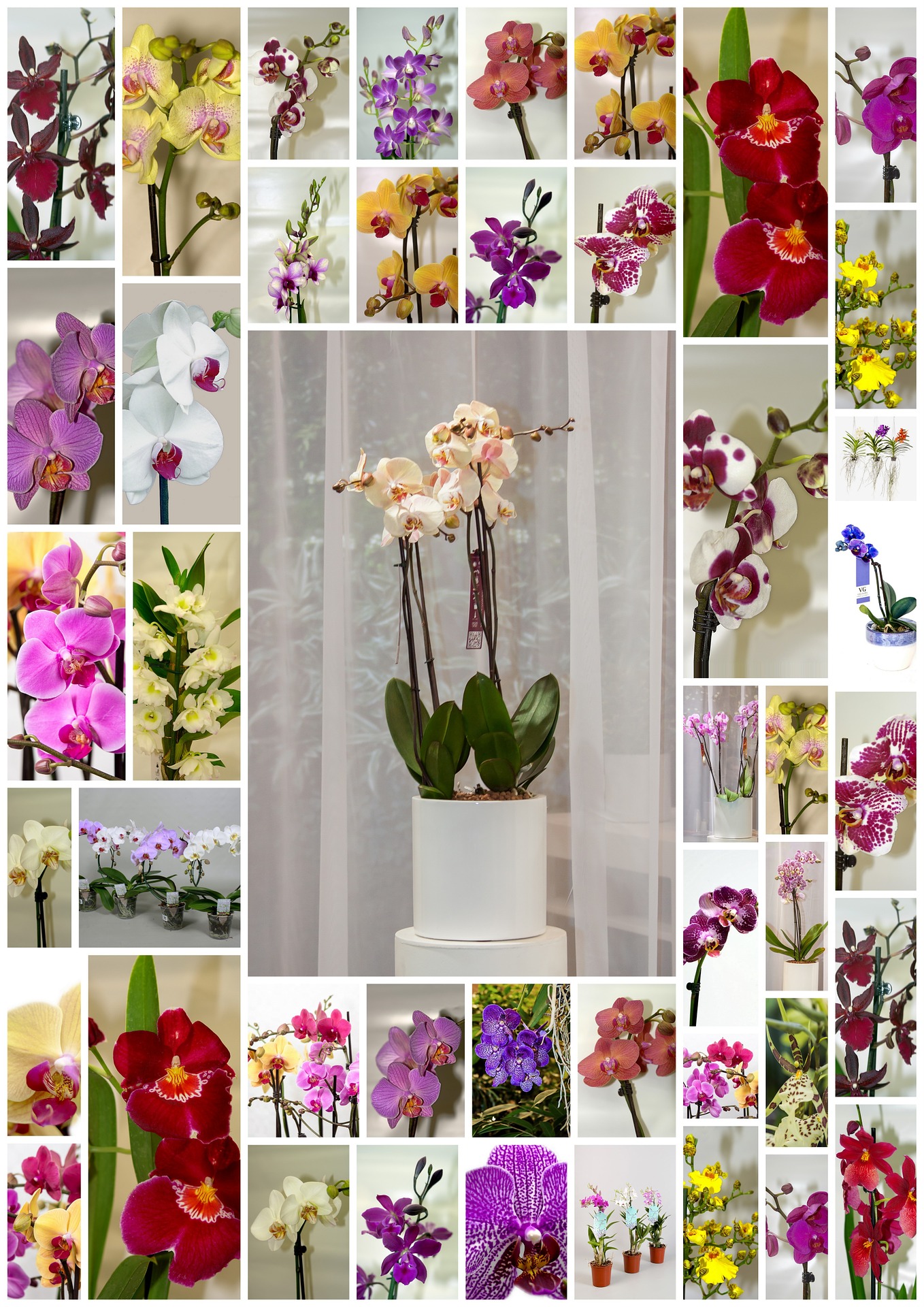
Phals will take your breath away once you see them displayed in garden centers, groceries, or big box stores. Their delicate petals in gorgeous colors and their broad green leaves will surely make you want one. But you should choose wisely to have a winner plant, which, to be honest, isn’t quite easy as growers usually ship them in peak blossom and good health.
So how could you know if one plant is superior to others? Look for a full and round plant with curved, smooth-edged petals that are thick and fine-textured. A high flower count is highly desirable as well. Leaves should be turgid and firm with uniformly light to dark green color.
Find the Perfect Location
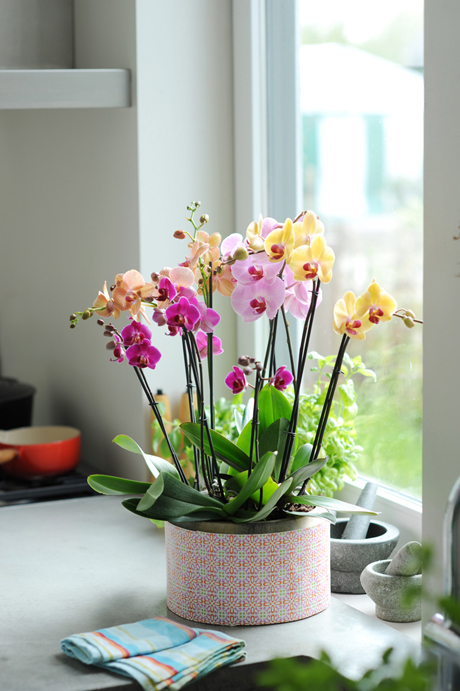
photo via static.squarespace.com
Once you have your Phalaenopsis plant in your home, it is time to place it in the perfect location. This means finding an area that receives bright, indirect light. A moderately bright windowsill or similar spot would be perfect. Phals grow beautifully in an east window and can be grown in a south or west window protected by a sheer curtain. The color of the phal’s leaves is a good light indicator – if they are olive green, then the plant is getting enough light; if they are darker, it means it is not getting enough light. Simple as that!
Temperature

photo via quiggsflorist.co.uk
Phals will thrive best in a room with a daytime temperature of around 75°F and a night temperature of 65°F. 95º F is the maximum temperature recommendation. Although occasional deviations will not harm your plant, this can be a problem when it is in the bud – chilly temperatures may cause the plant to stop budding.
Watering
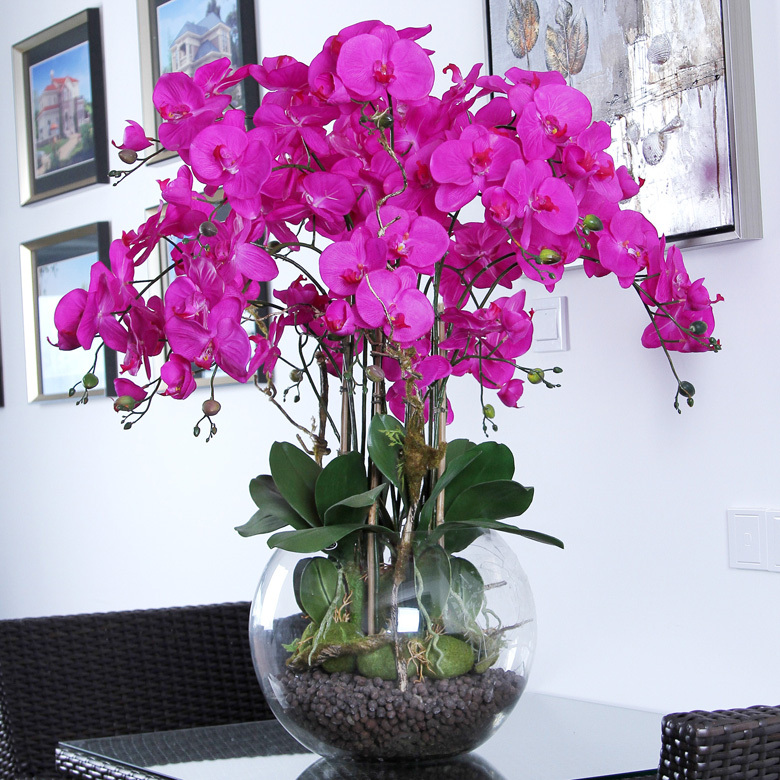
photo via g04.s.alicdn.com
Generally, Phalaenopsis require watering about once every 4 to 7 days, but this is not a rule. The amount of water that your orchid needs depend mostly on the potting medium. Phals are usually grown in bark or moss, so if your orchid is potted in bark water once a week, it is potted in moss, water when the top feels dry. Other factors will determine your watering routine, like light and heat. For example, in the summer months, the plant will need more frequent watering, while in winter, it will need less. Another thing to have in mind is that it is best to water your phal in the morning. Here is how the process should go: place the plant in the sink and use tepid water, let the water run through the plant for a minute or so and be sure to let the plant drain completely.
Humidity
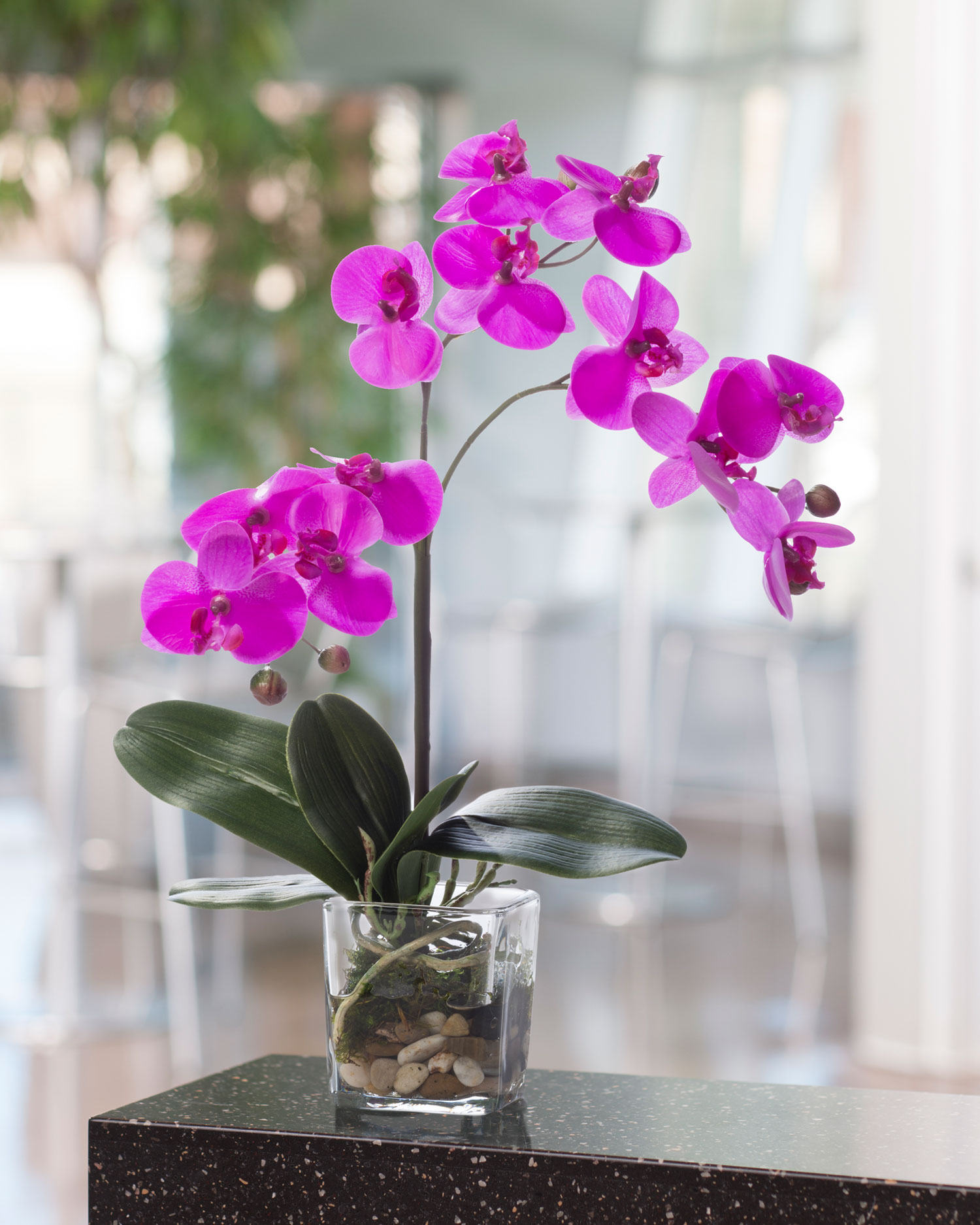
photo via petals.com
Humidity is very important for moth orchids. They ideally require a humidity level of 55-75%. So how to increase moisture around your orchids? Simple place a shallow tray filled with pebbles and water under your plant. Make sure the pot does not sit in water as this will rot the roots.
Feeding
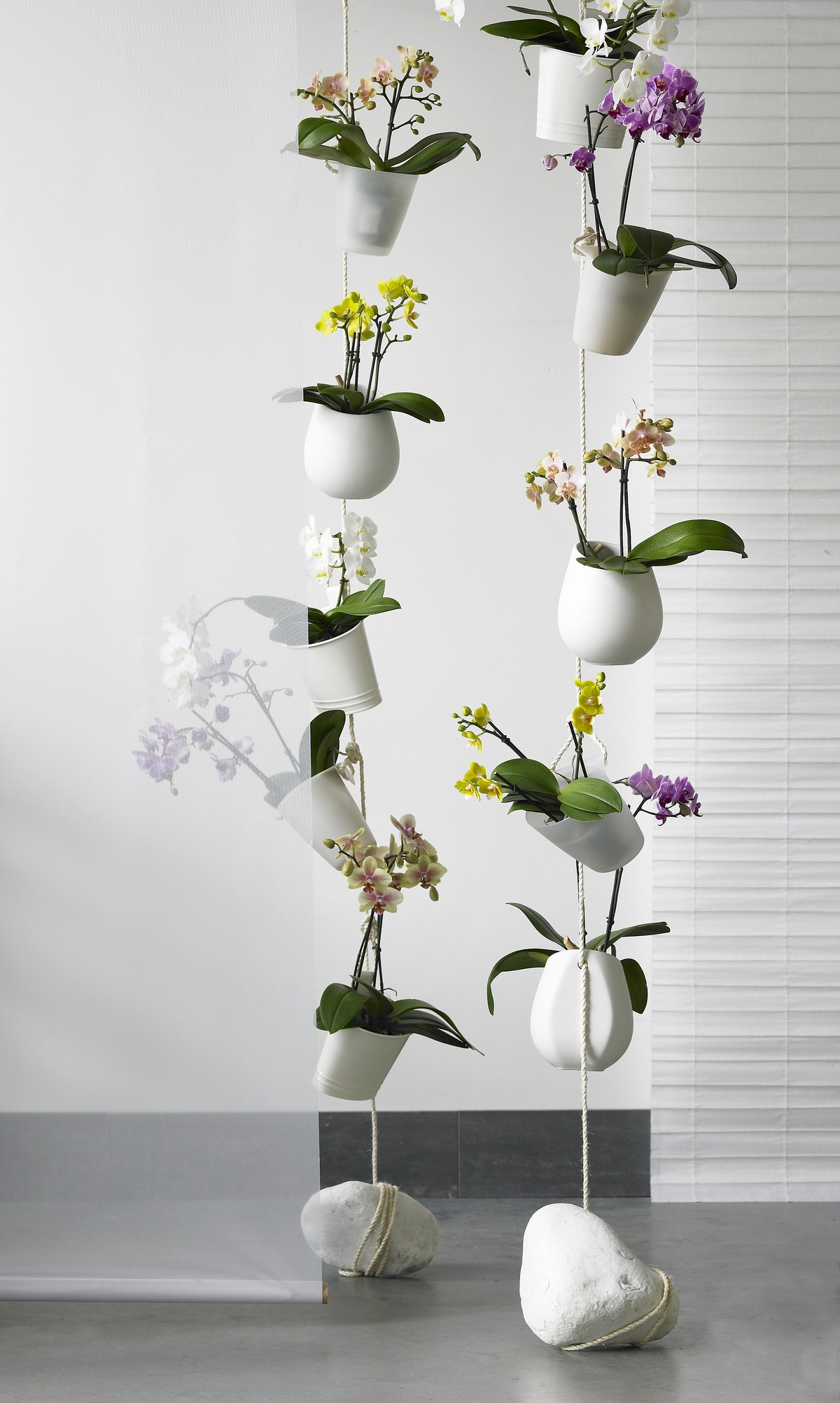
photo via gellerts.co.nz
The first rule about feeding your phal – do not overdo it! Good results may be obtained by using any balanced orchid fertilizer. Feed your plant weekly. Once a month, use clear water to flush any accumulated salts from the potting mix.
Flowering
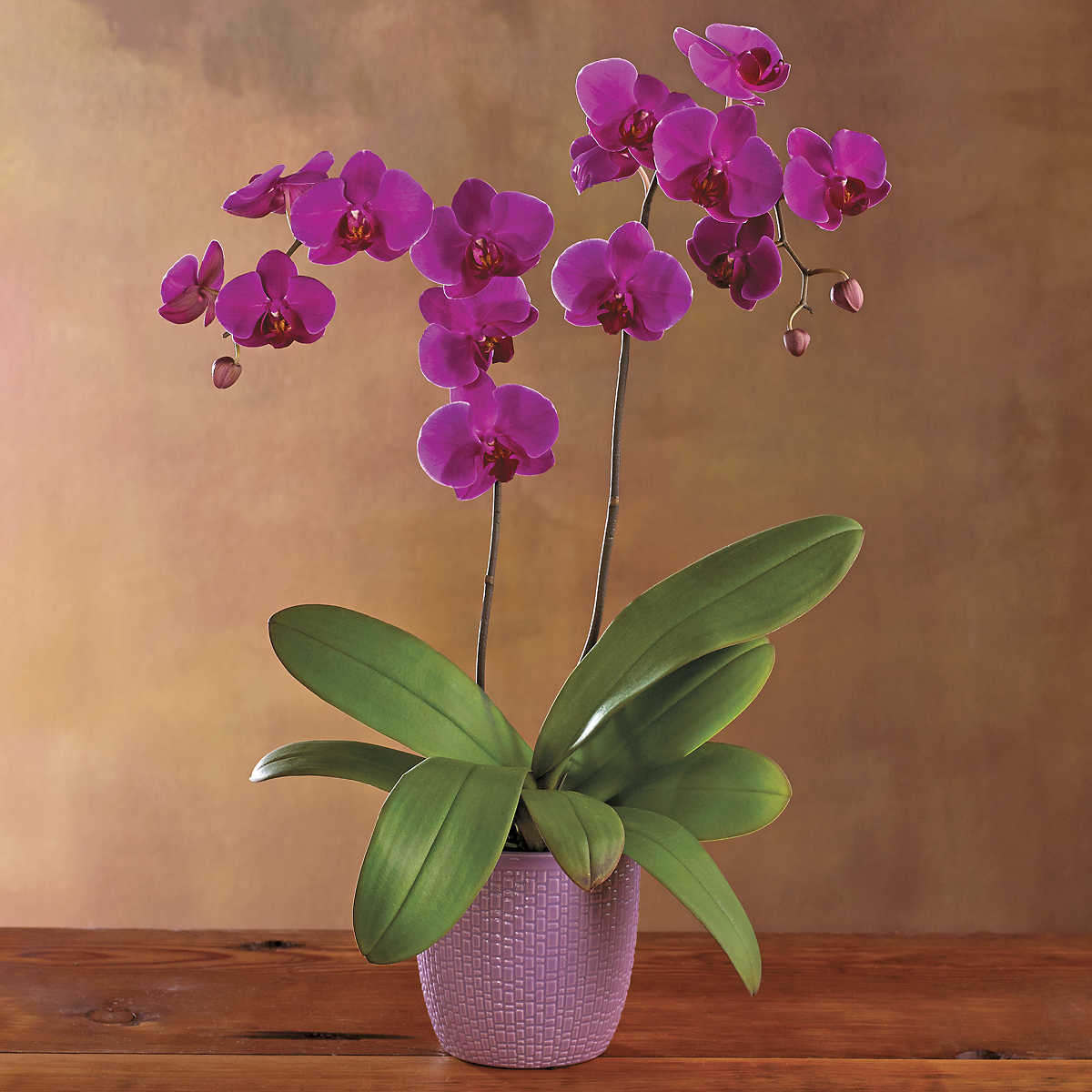
photo via images.harryanddavid.com
One of the things that makes Phals so popular is surely their blooming period, which can last from 2 to 6 months. They are one of the longest blooming orchids. Phalaenopsis have also been known to bloom 2 to 3 times per year once they have reached a mature size. When the blooming period is over, don’t throw away your orchid because it will flower again with just a little care.
Care After Blooming
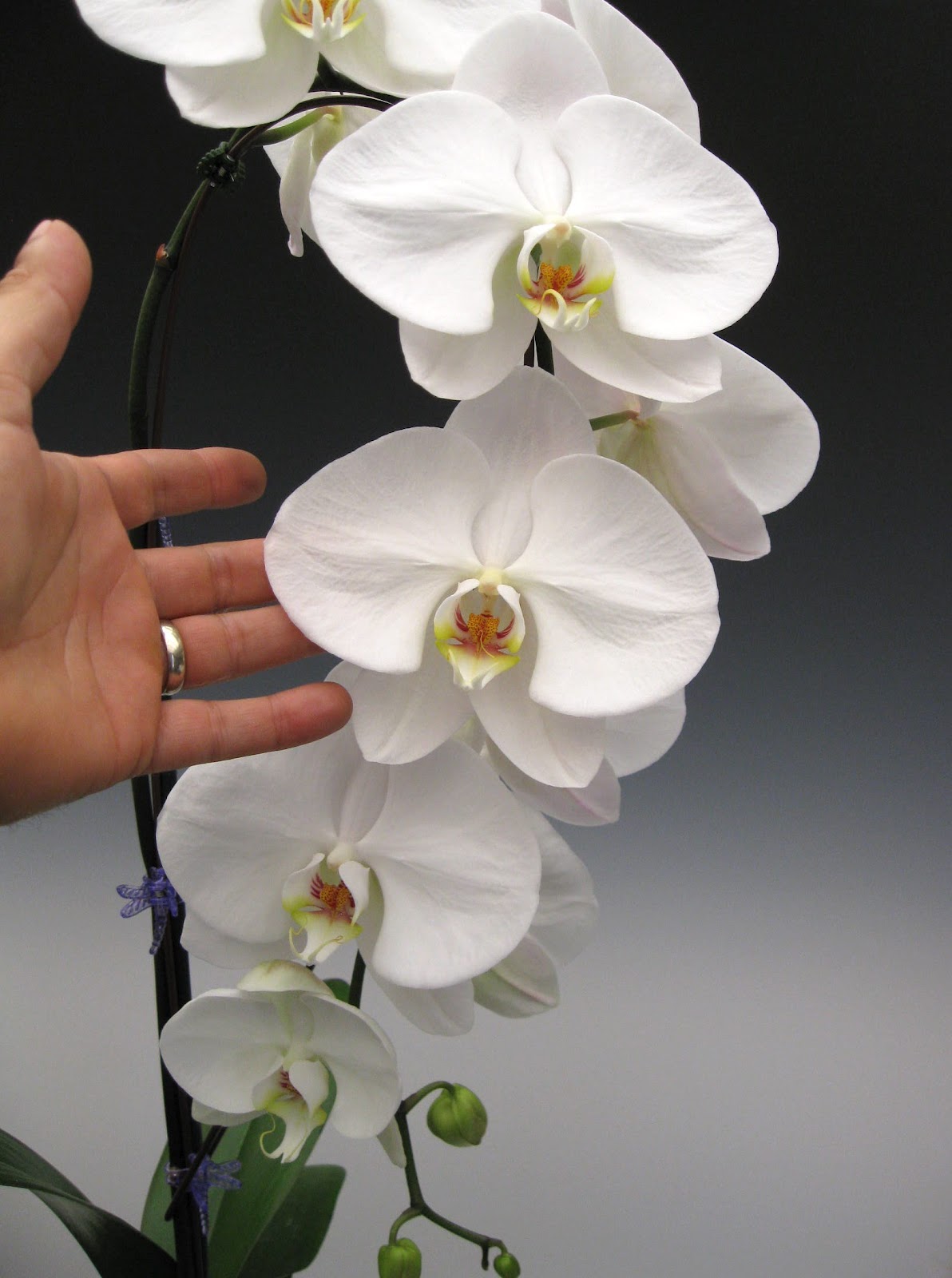
photo via 4.bp.blogspot.com
When all the pretty flowers fall out of your phal’s stem, there are three options to consider: leave the flower spike intact, cut it back to a node, or remove it entirely.If you leave it intact, it may produce new blooms from the tips. If you cut it back it may produce a new flower spike where you made the cut. if the existing stem starts to turn brown or yellow. then remove it entirely. You can also track your plant into bloom by placing it in a cooler area where the night temperature is slightly lower, about 55°F. Once a bloom spike appears, return your orchid to its normal setting.
Repotting
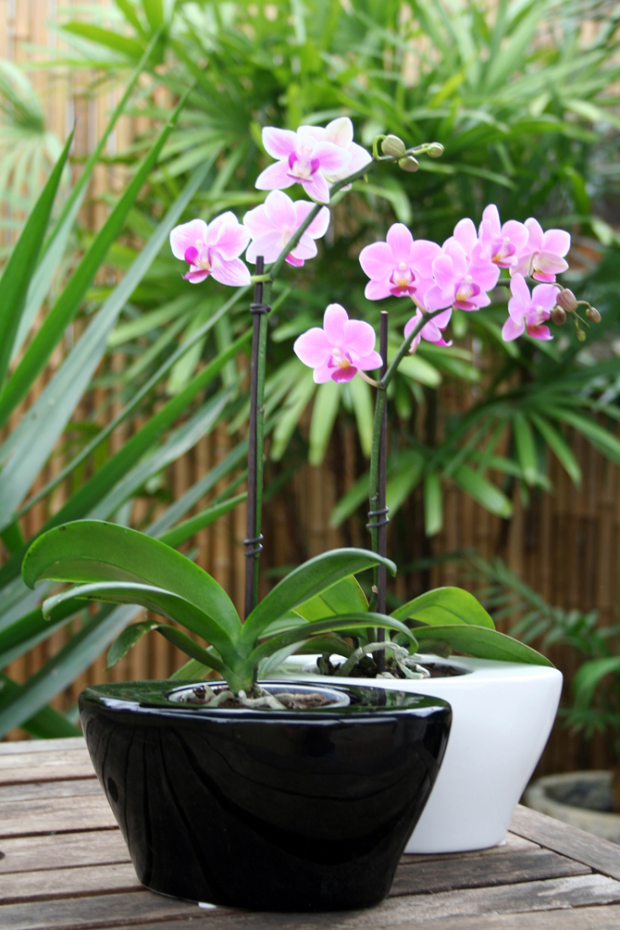
photo via palmland.com.au for our Phalaenopsis Orchids Care Guide
As we said, Phals are long-term bloomers and will be in bloom for most of the year. When the flowers fall off, it is a good chance to repot your plant. It will be best if this happens in spring or fall as the temperatures are mild and avoid unnecessary shock for the plant. Make sure you use a top-quality orchid mix for repotting. Water sparingly until new roots are well established because a good root system ensures blooming.
Bud Blast
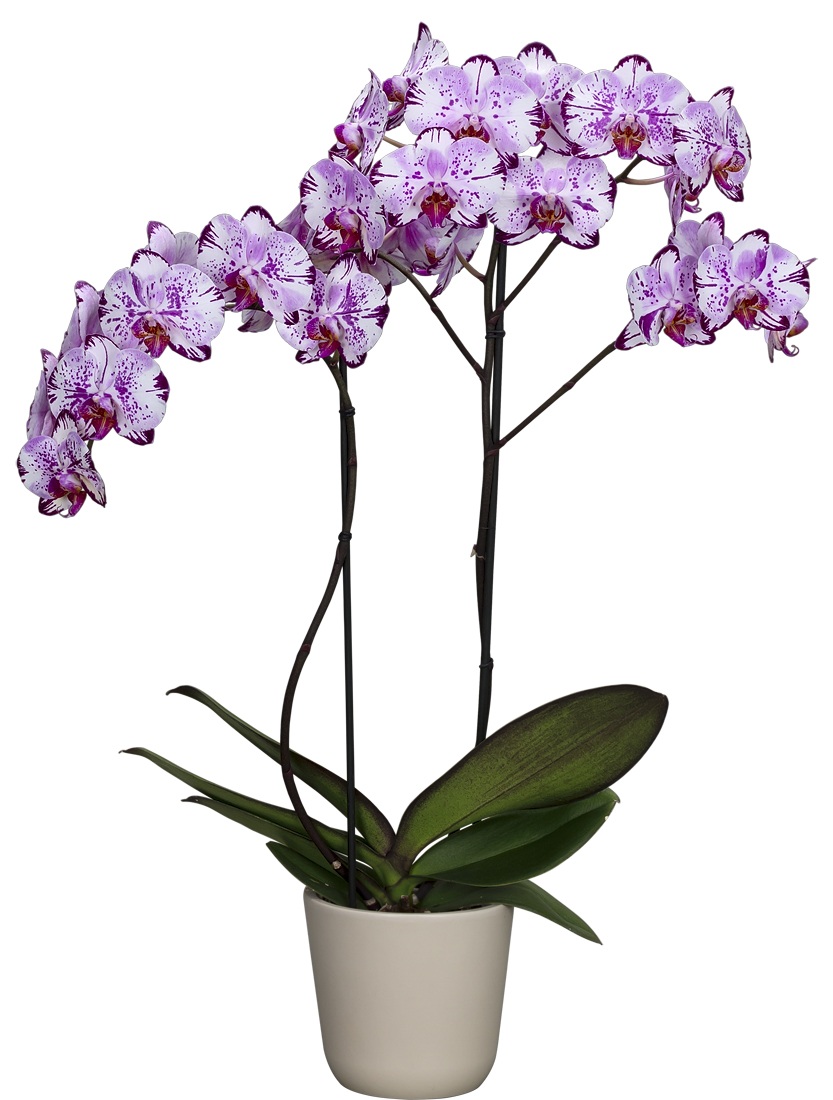
photo via newplantsandflowers.com
Bud blast is the main reason why some people think Phals are hard to maintain. Yes, it does happen – buds dry up and drop off the plants without ever opening. But there is always a reason for this, and if you make sure you have everything right, you can avoid this. Some of the bud blast factors are high room temperature, very low light, too much watering, too much fertilizer, using softened water, etc. Even strong fumes like new carpets or refinished woodwork can make buds drop.




So can ripening fruits and maybe vegetables……